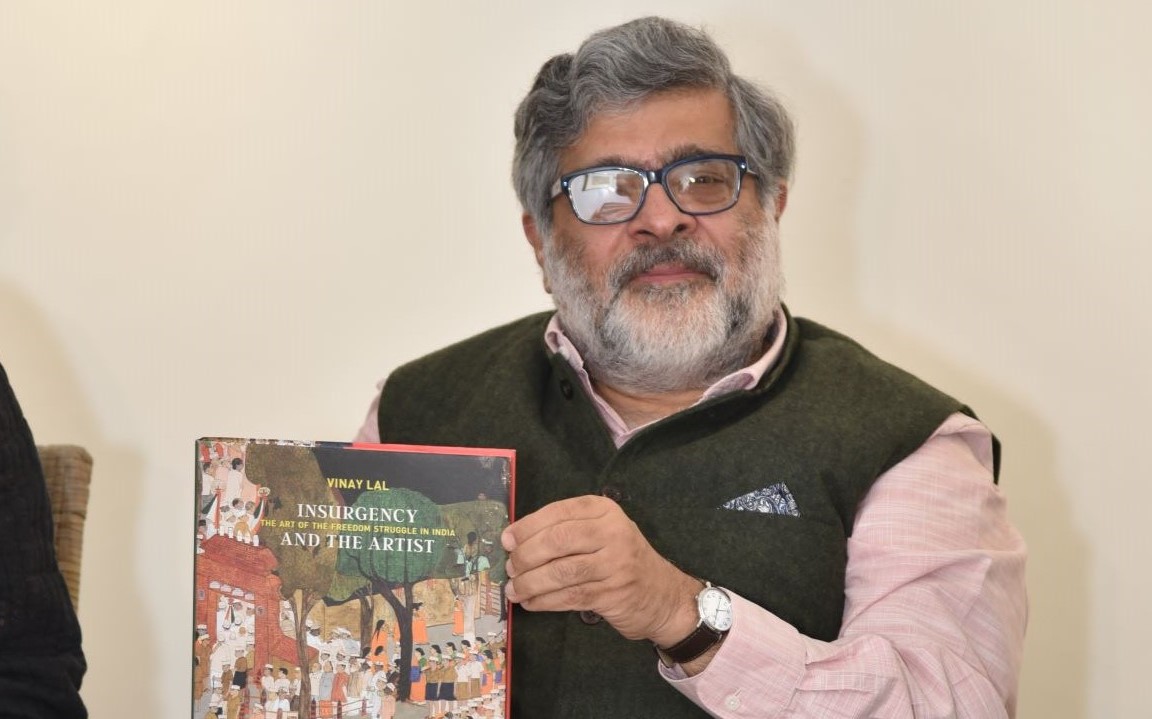Introduction
The long-sought and hard-won struggle for freedom was witness to an overwhelming participation of people throughout the country. Some of the most iconic images of India’s fight for freedom include the Dandi March led by Mahatma Gandhi in 1930, the ‘Simon Go Back’ protests in 1928, and Jawaharlal Nehru’s iconic Red Fort speech at the stroke of midnight on 15 August 1947.
With independent India having marked 75 years of freedom this year, we are revisiting some of the defining artworks presenting the freedom struggle of those seven decades.
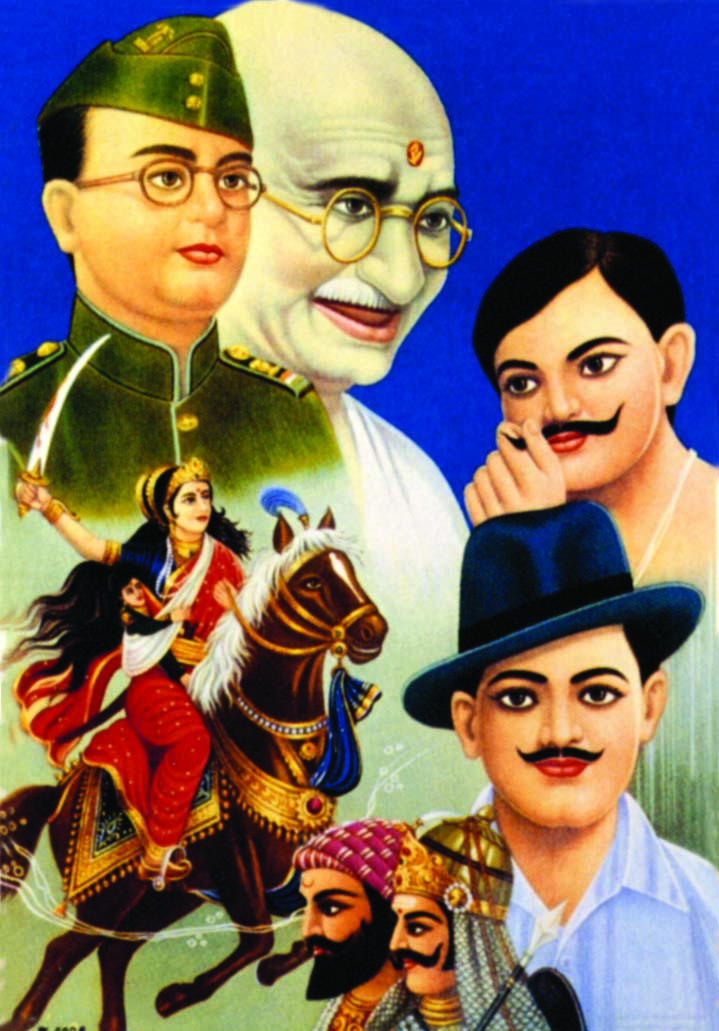
The calendar print ‘Bharat ke Veer’ places the staunch communist Bhagat Singh, the HSRA radical Chandrasekhar Azad, the reluctant anti-colonialist Queen of Jhansi, the secularist Subhas Bose, the Hindu warriors Shivaji and Maharana Pratap, and the ‘saintly’ Mahatma, who nonetheless advocated for non-intervention on the part of the state in matters of religion, in a single frame as the heroes of India.
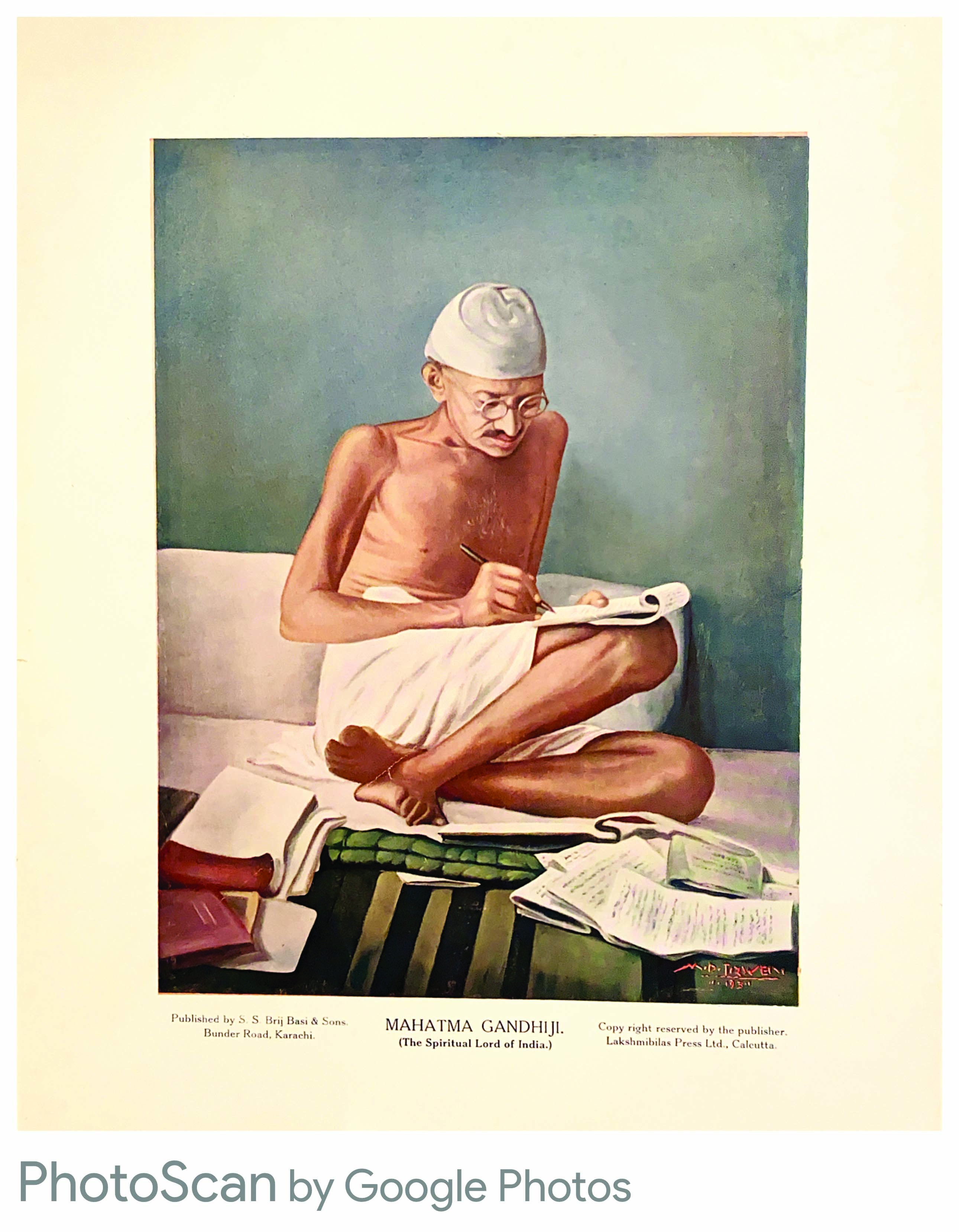
In Gandhi, the ‘devta’, prophet, or ‘Spiritual Lord’ of India had arrived at the forefront of the Indian independence struggle.
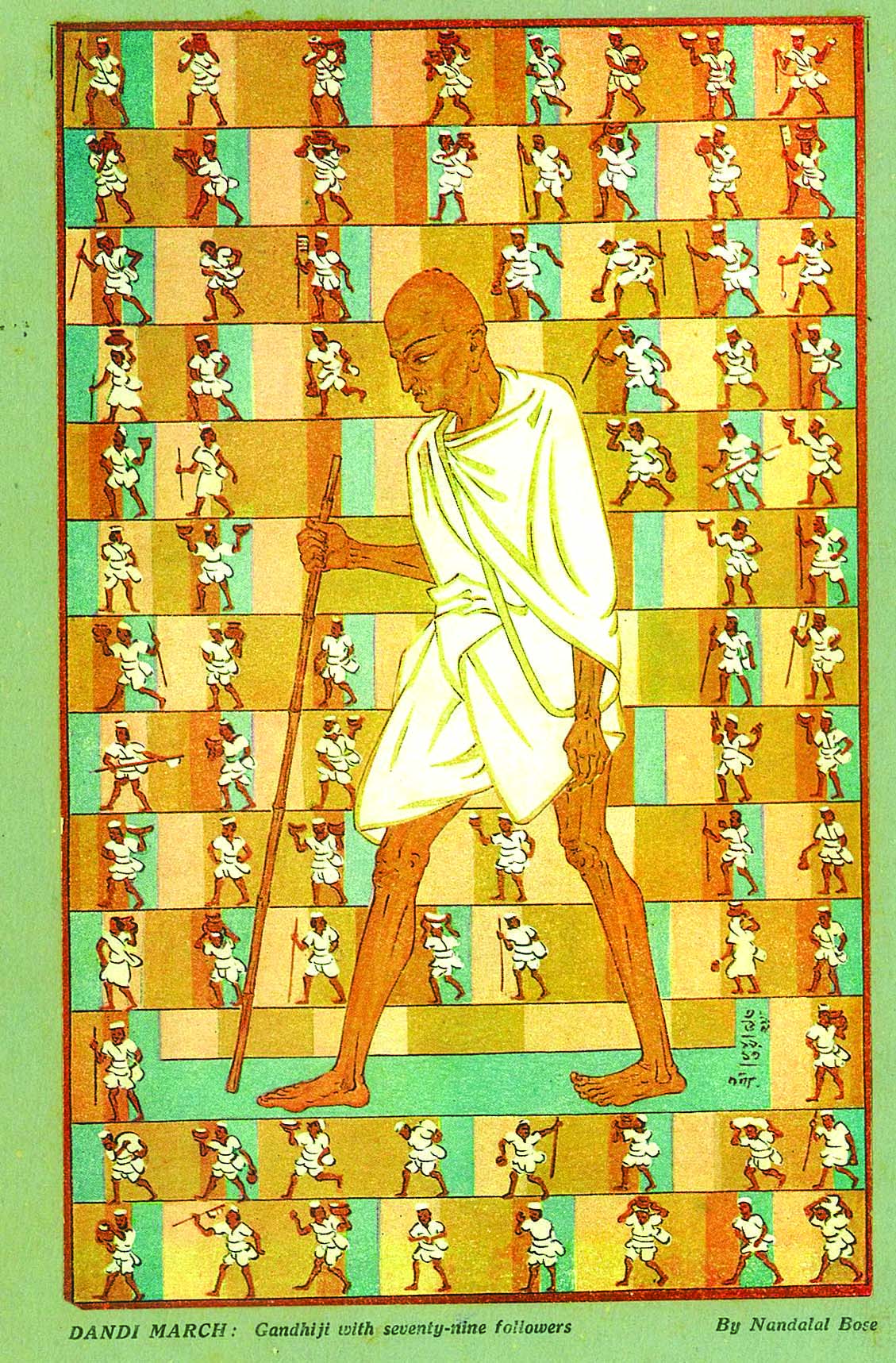
Haridas Muzumdar, who played an important role in popularizing Gandhi’s ideas in the United States – who marched alongside Gandhi, as in this variation of his iconic drawing of the walking ‘Bapuji’, which conveys simultaneously the singularity of the Mahatma and equally the sense that history was made by him in conjunction with his companions.
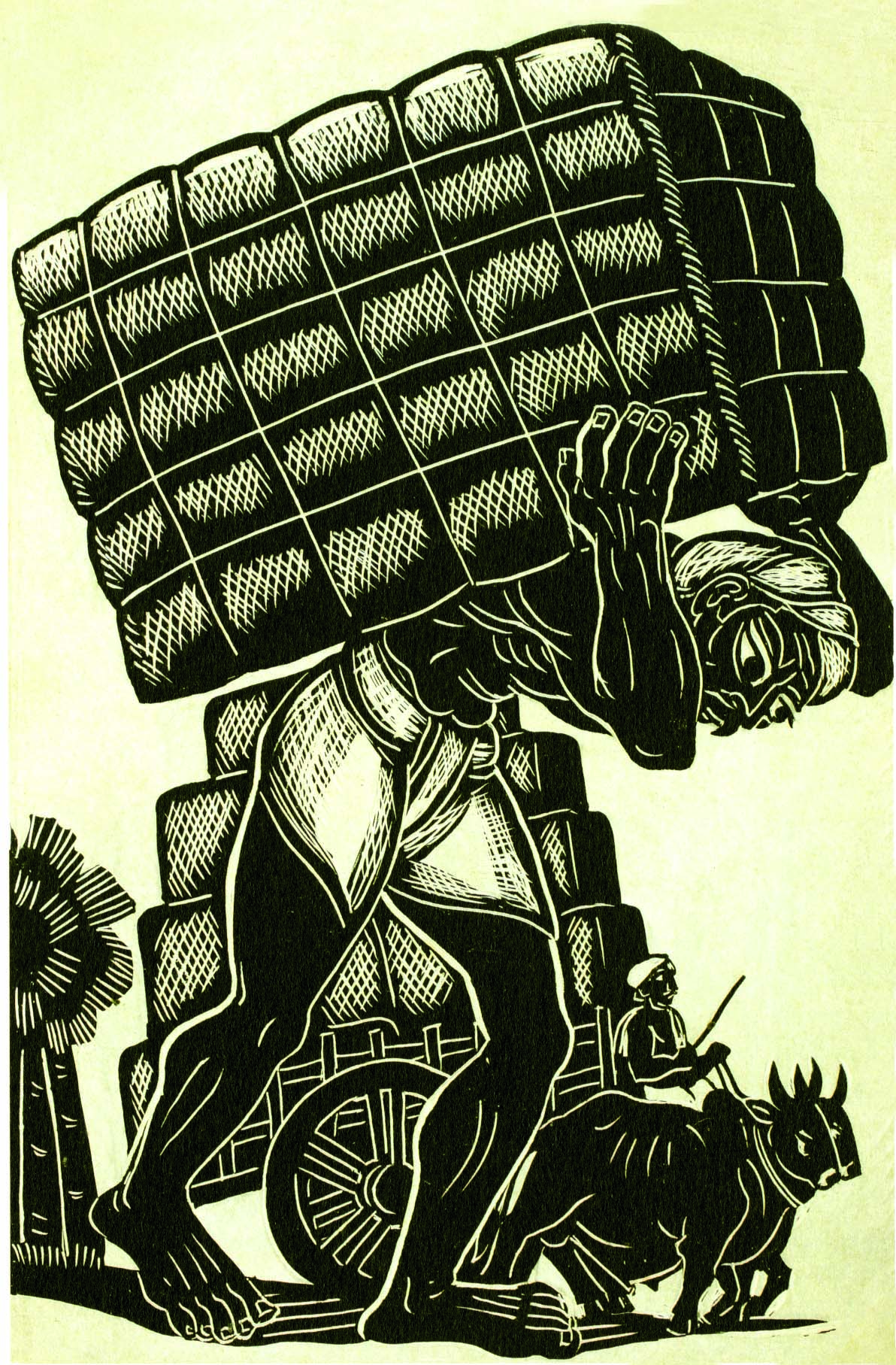
A labourer carries an immense load on his back, sometimes treated no better than the oxen pulling a bullock cart groaning with the weight of hay or produce. The print is untitled but, in the text accompanying it, Chittaprosad appears to have annotated it as ‘the cheapest labour in the world’. The conditions in the mines were, if anything, worse since mining methods were ‘crude and dreadful’ and safeguards were non-existent.
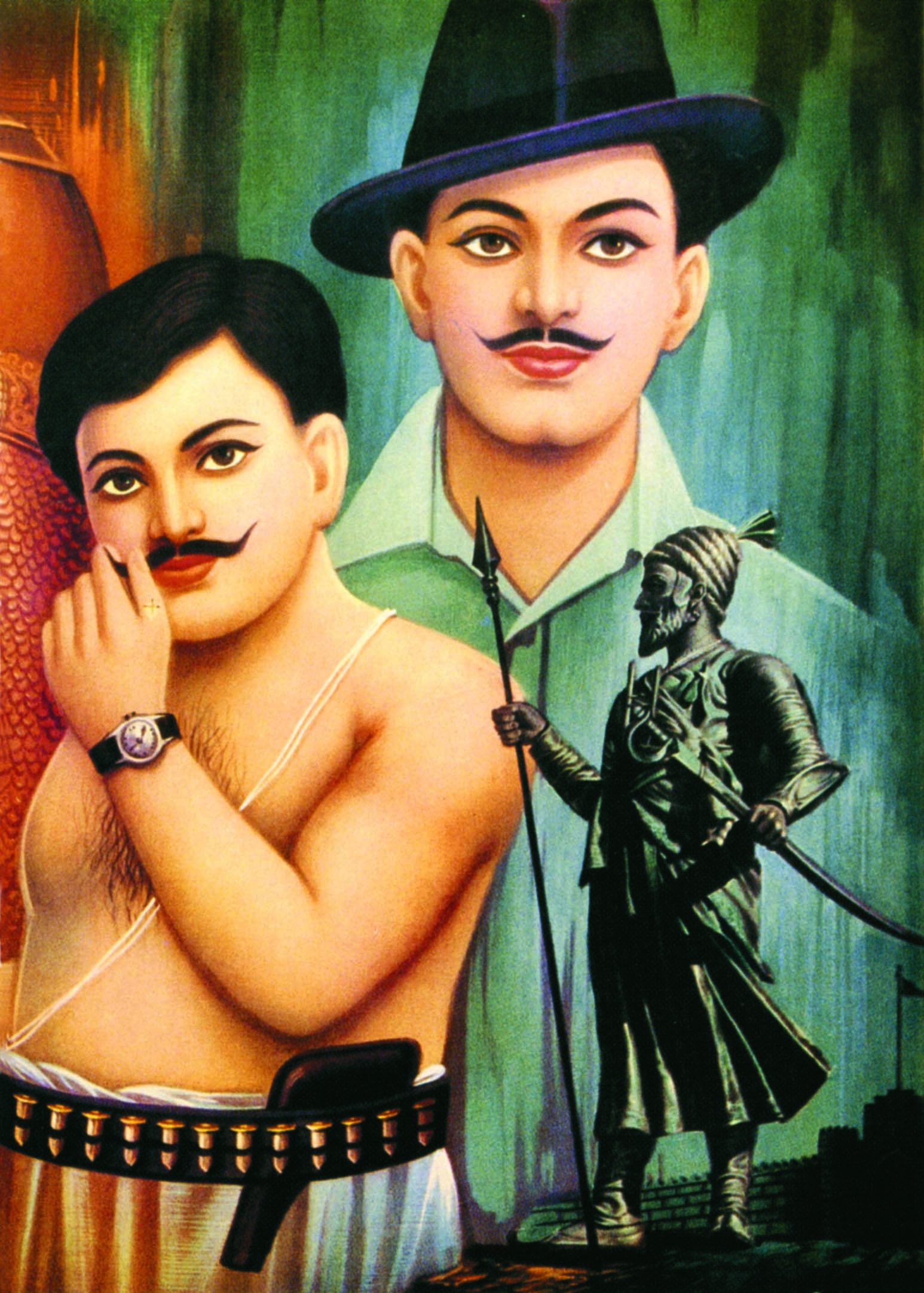
In this calendar printed at the Swastik Picture House in Fatehpuri, Delhi, Bhagat Singh is shown alongside Chandrasekhar Azad and Shivaji. Chandrasekhar had, by this time, taken on the surname ‘Azad’ and it is he who in time, along with Bhagat Singh and others, would transform the HRA into the Hindustan Socialist Republican Association (HSRA).
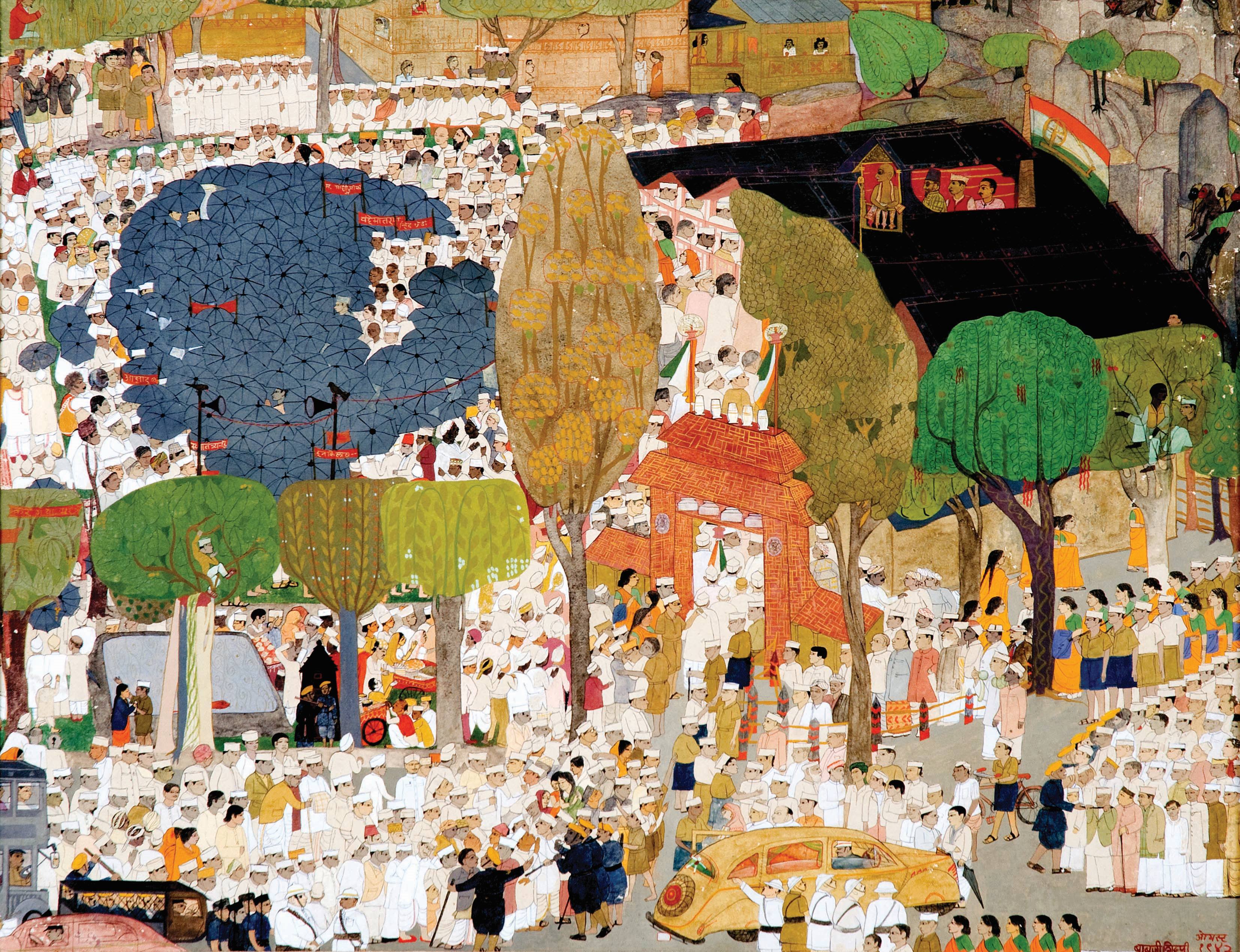
On 8 August, Gandhi delivered a speech before a gathering where he urged his countrymen and women to consider themselves free as of that very moment, and be prepared to follow their own conscience if the leaders were taken into custody, before enjoining them to follow this injunction: ‘Do or Die’. The Bombay-based artist Babuji Shilpi was there to capture the frenetic energy of the moment. The crowd was very large, and some men positioned themselves atop trees to get a better view of Gandhi and the leaders seated behind him; male and female volunteers stood by to ensure some semblance of order. It is a sea of white khadi; but another mass of people can also be seen with umbrellas and banners sticking out.
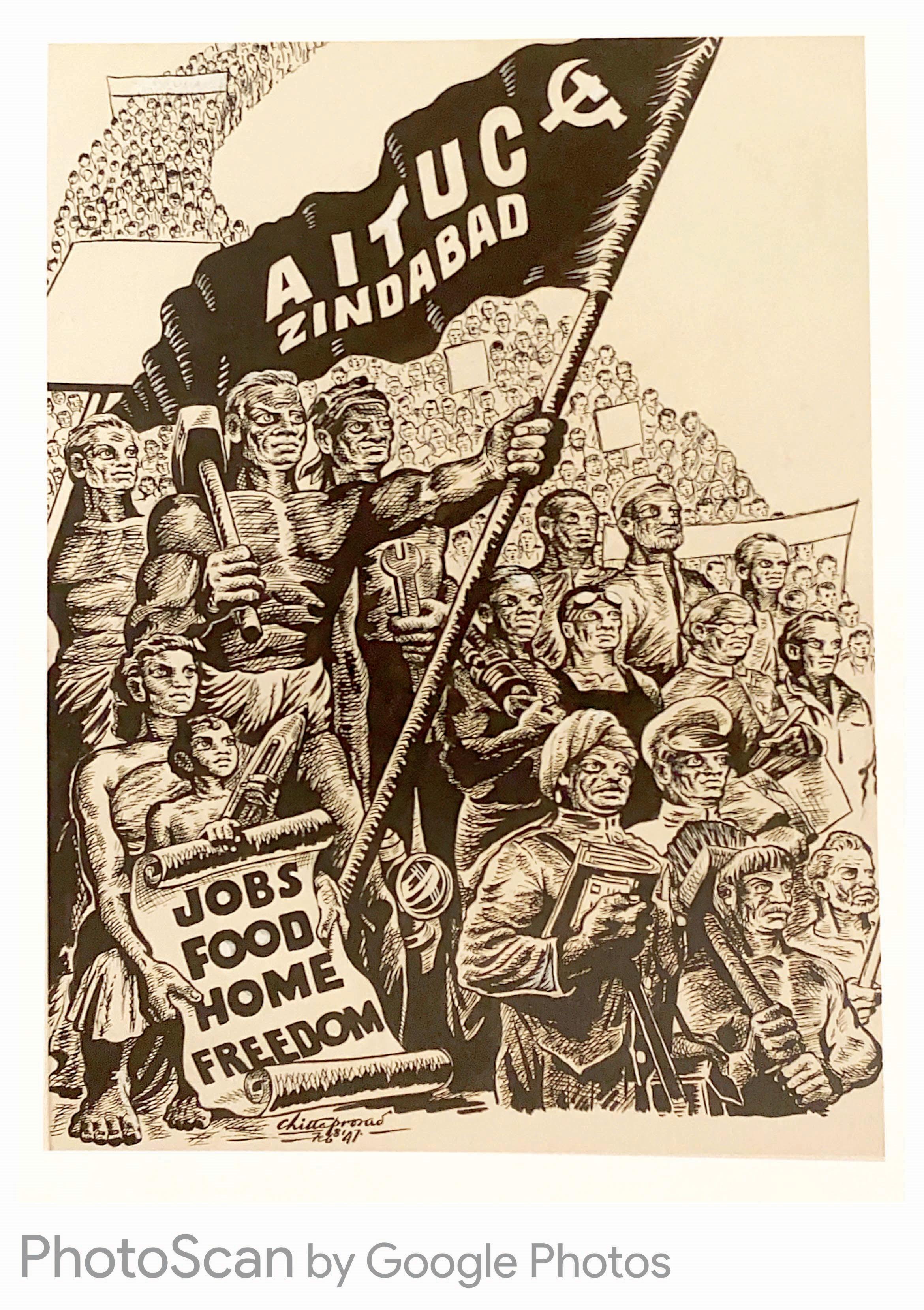
Chittaprosad’s art was increasingly reflecting the aesthetic associated with the social realism of Soviet art, as can be seen in this poster from early 1947 in support of a demonstration by the All India Trade Union Congress (AITUC), associated with the CPI, demanding ‘jobs food home freedom’.
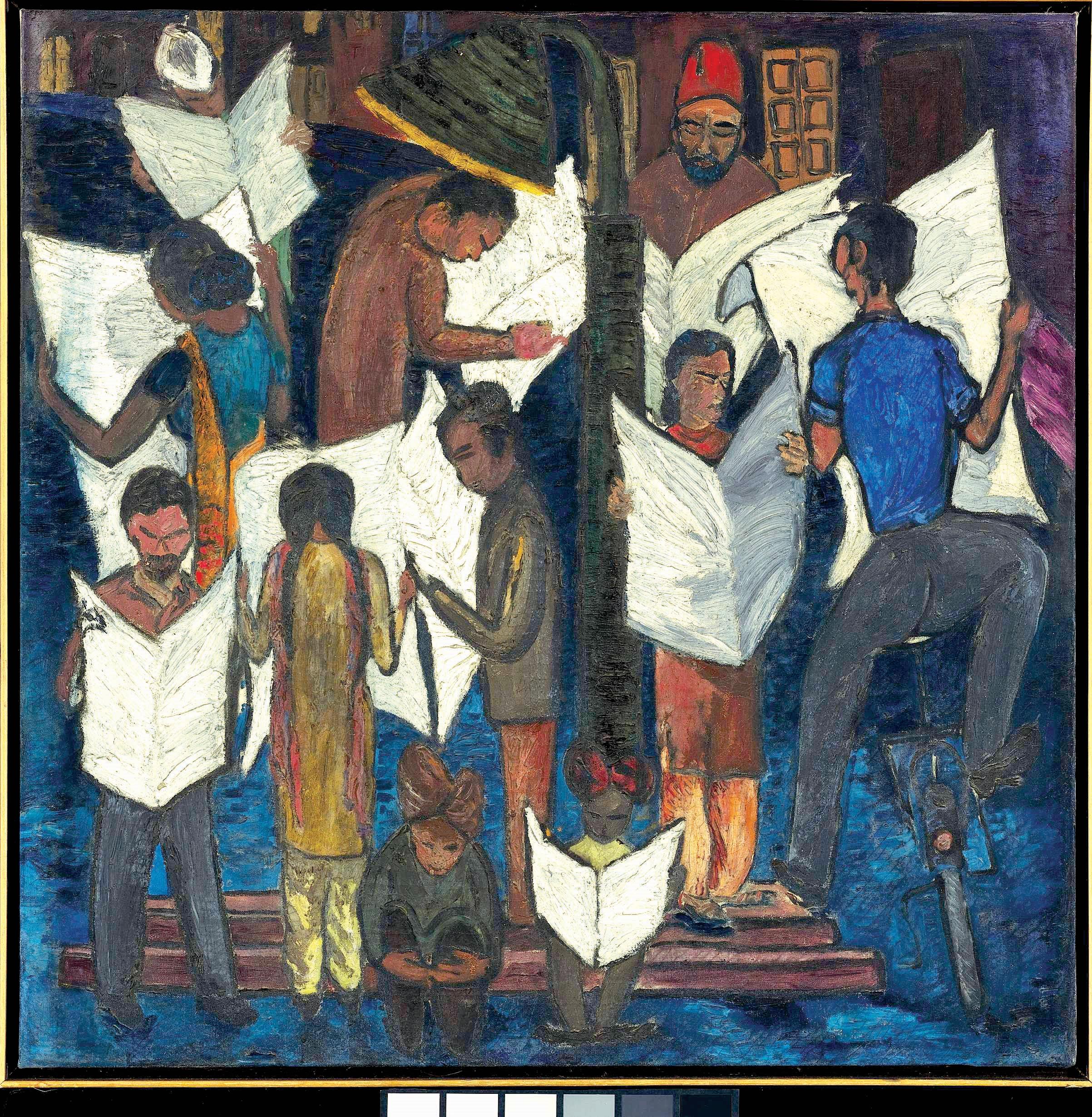
Under the dim light of a street lamp, men and women stand in muted horror silently poring through the newspaper attempting to absorb the enormity of the calamity before a nation now plunged into darkness.
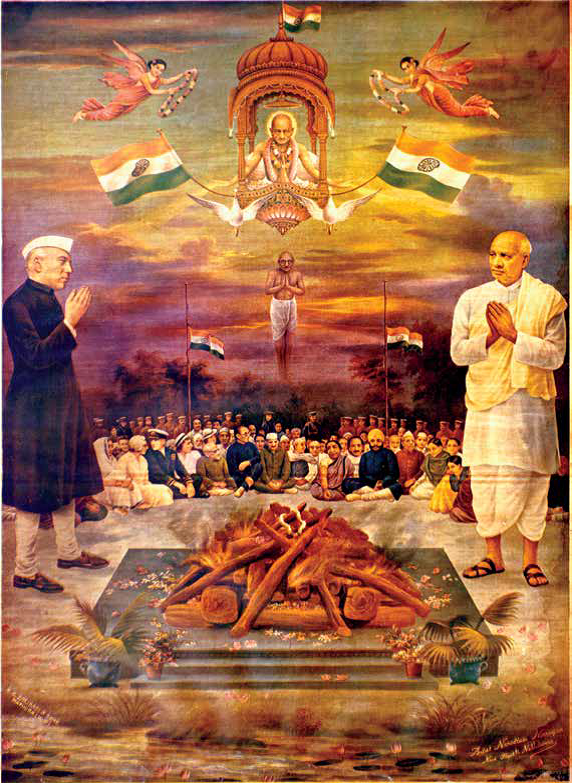
Admittedly one of the more arresting prints in this vein wherein Gandhi is drawn to heaven in a celestial chariot pulled by a pair of swans as the apsaras hover around him with garlands; yet, the same Gandhi is also shown taking gentle strides towards his own funeral pyre, in front of which are seated, among others, the Mountbattens, Maulana Azad, Sarojini Naidu, Baldev Singh, and Manu and Abha. The heir apparent, Jawaharlal Nehru, and the Mahatma’s own right-hand man, Sardar Patel, take the place of dvarapalas – the guardians of India’s destiny.
Conclusion
Insurgency And The Artist looks at art produced during the course of what in India is called ‘the freedom struggle’ and in the few months beyond, culminating in the assassination of Mohandas Karamchand Gandhi on 30 January 1948. This gloriously illustrated work simultaneously offers a narrative history of the freedom struggle, and the rich interplay of text and images is designed to offer insights that neither conventional histories nor images can offer in isolation.
-Ushnav Shroff
Copyeditor, Roli Books

